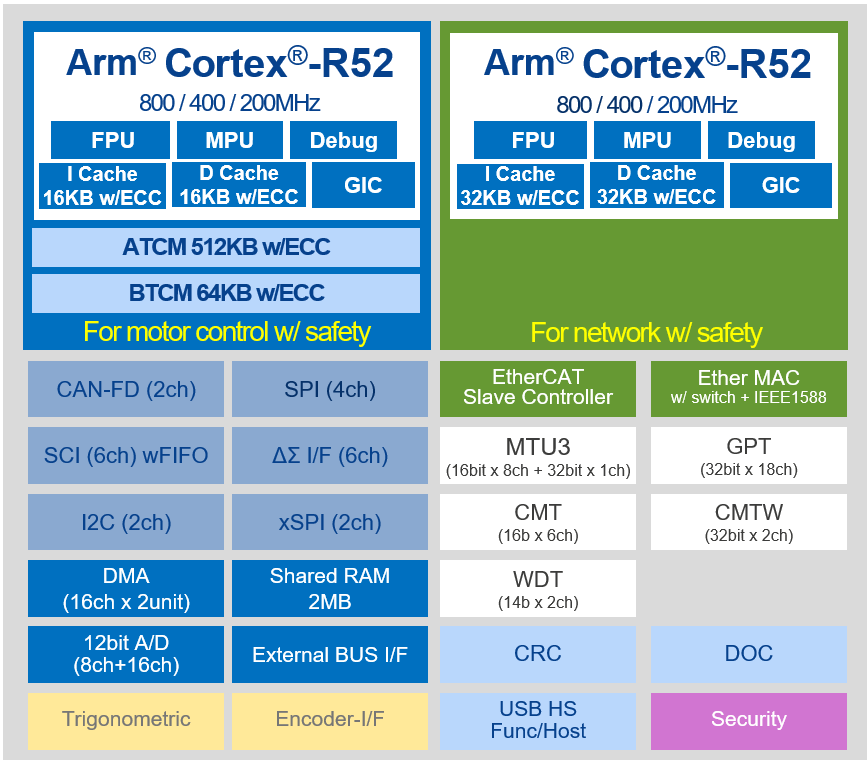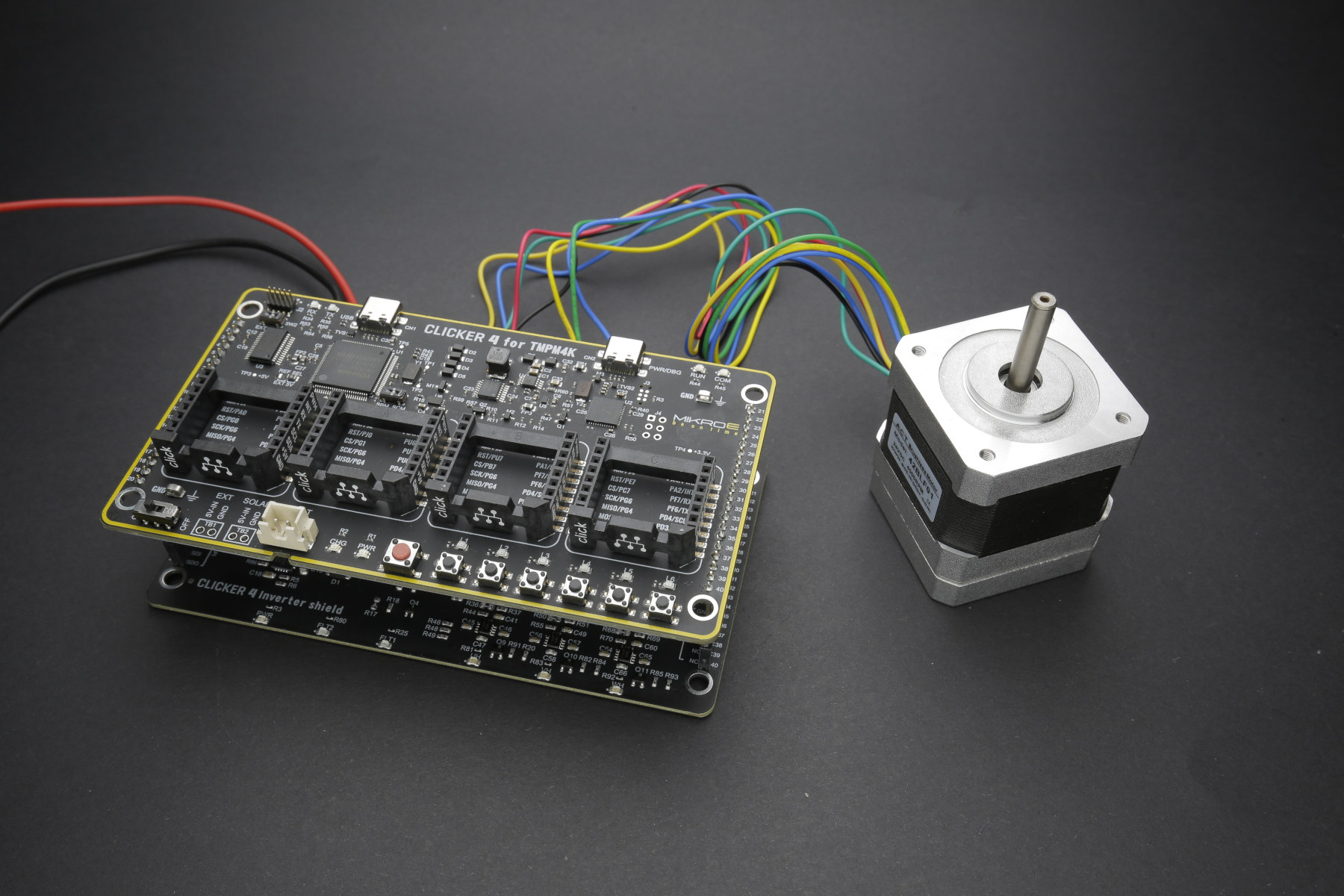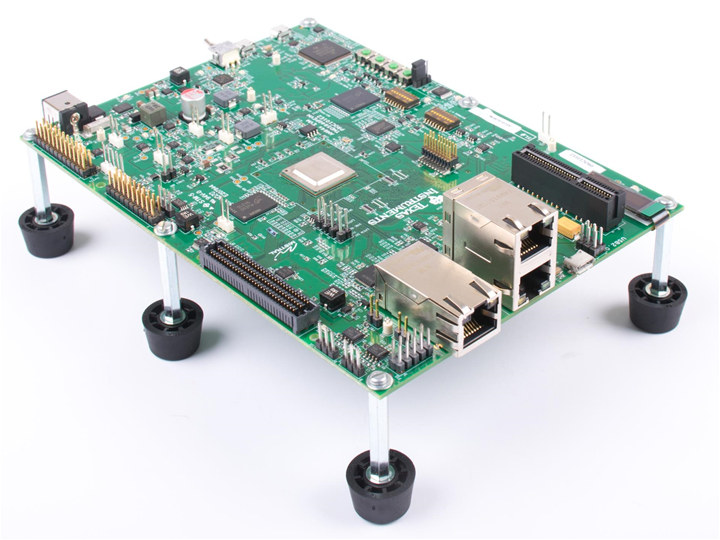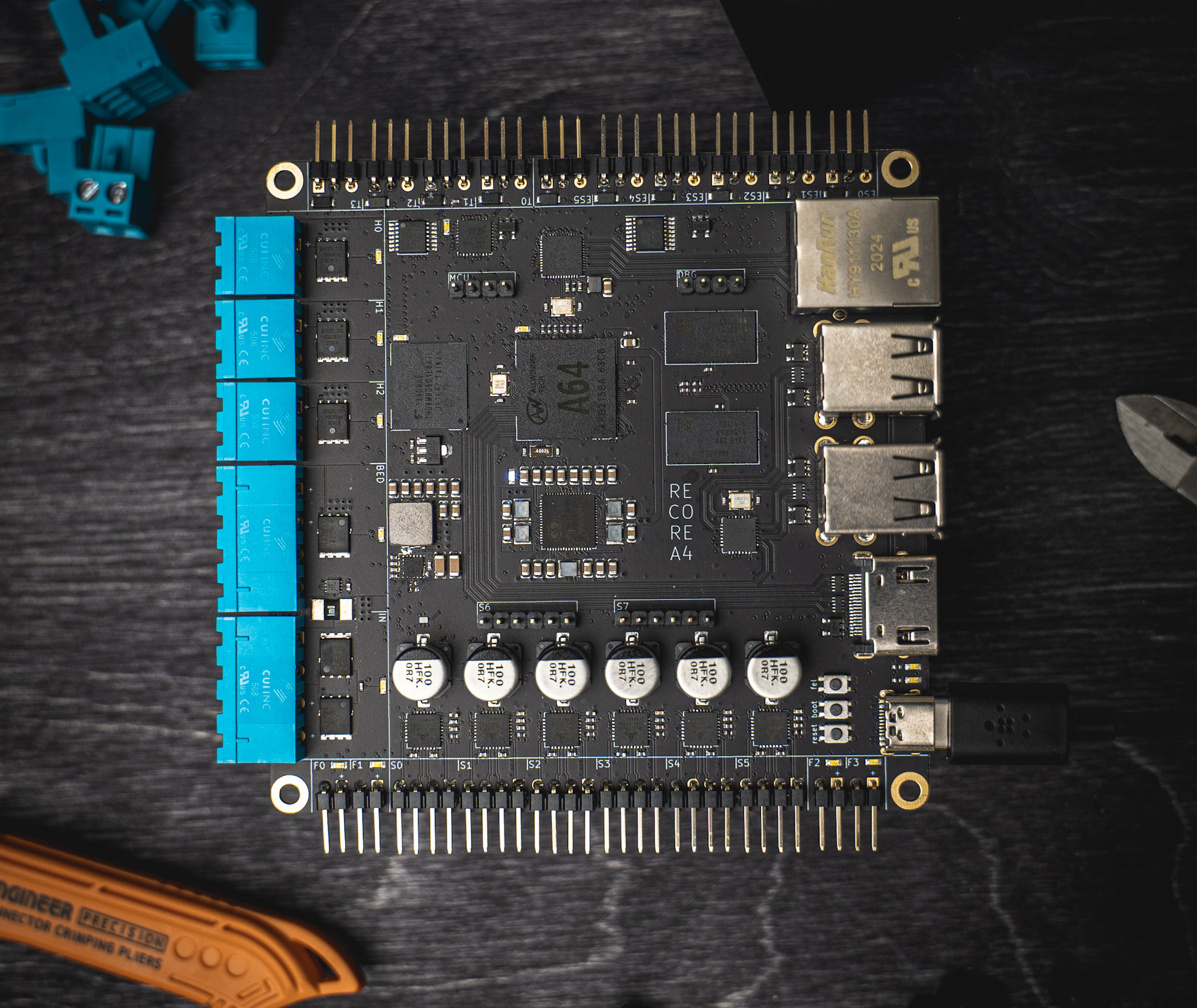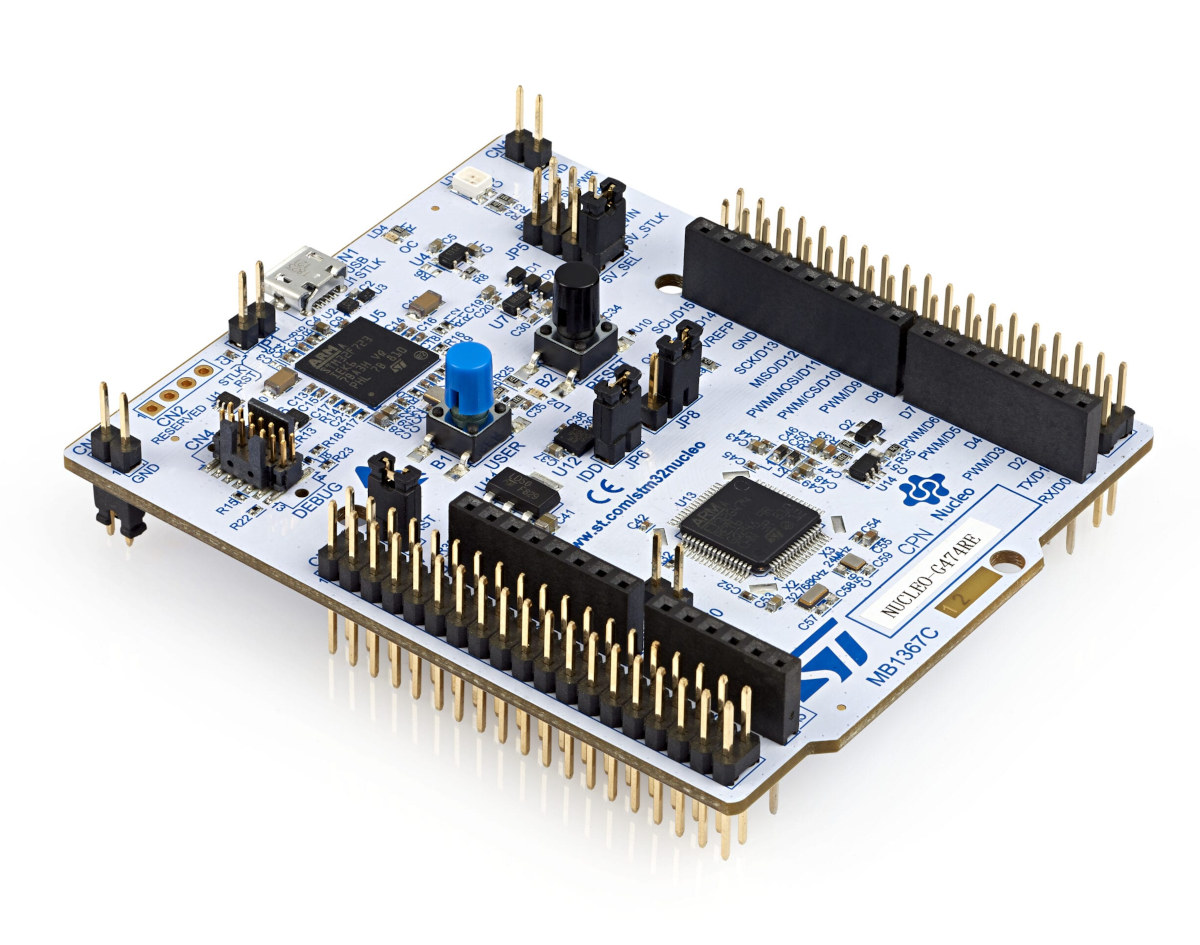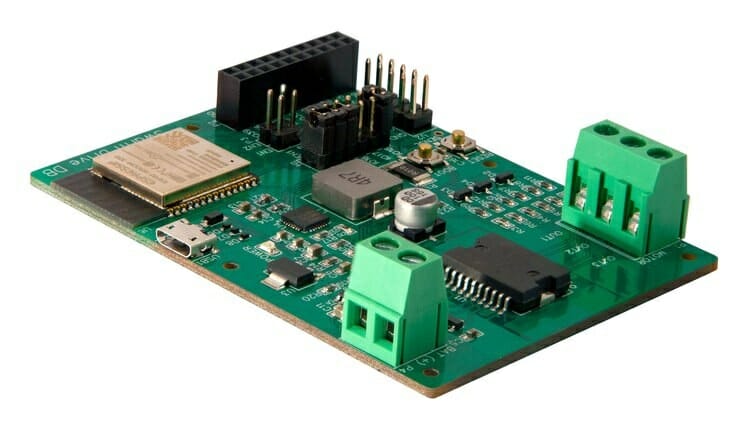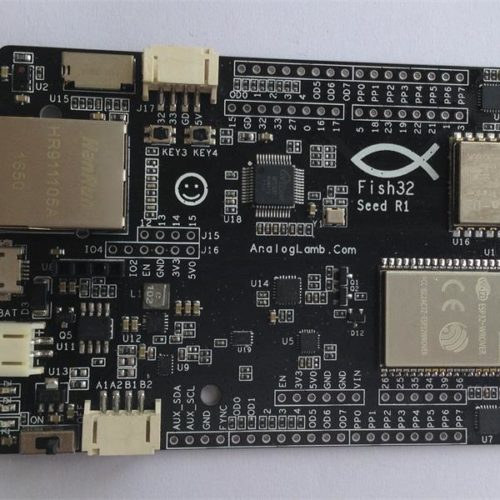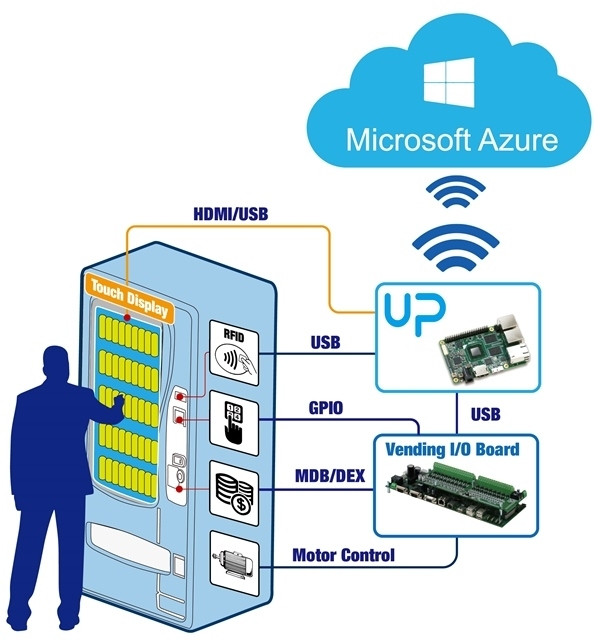Built around two Arm Cortex-R52 cores clocked at up to 800 MHz, Renesas RZ/T2M microprocessor units (MPUs) target real-time, high-precision motor control applications such as AC servo drives and industrial robots. The RZ/T2M microprocessor also supports Ethernet with TSN and functional safety, and has been designed in such a way to reduce the number of external components in order to both decrease the BoM costs and the product size. Renesas RZ/T2M key features and specifications: CPU – Up to 2x Arm Cortex-R52 cores clocked at up to 800MHz, one core for motor control, and the other for networking Trigonometric function accelerator Memory – Tightly coupled memory 576KB with ECC, 2MB RAM with ECC Storage I/F – Octa/Quad SPI support Networking 3-port Gigabit Ethernet switch with TSN Industrial Ethernet: EtherCAT, PROFINET RT/IRT, EtherNet/IP, etc… Motor control 2-channel encoder interface with support for A-format, EnDat, BiSS, HIPERFACE DSL, Tamagawa Functional safety support […]
Clicker 4 for TMPM4K board targets motor control with Toshiba M4K microcontroller
Toshiba and Mikroelektronika have launched the Clicker 4 for TMPM4K development board equipped with Toshiba M4K Arm Cortex-M4 microcontroller for motor control, as well as four mikroBUS sockets for MikroE Click expansion boards. The Clicker 4 for TMPM4K board is also fitted with an on-board CMSIS-DAP compliant Debug Unit based on Toshiba’s TMPM067 MCU, extension connectors, JTAG/SWD debug ports, LED indicators and push buttons, and works best with Clicker 4 Inverter Shield with six MOSFETs for motor driving, a 48V switching power supply, and a 5V regulated power source that can power the M4K board. Clicker 4 for TMPM4K specifications: MCU – Toshiba TMPM4KNFYAFG 32-bit Arm Cortex-M4 microcontroller @ up to 160 MHz with 256KB code flash, 32KB data flash, 24KB SRAM, as well as Vector Engine (A-VE+), Encoder and Programmable Motor Driver (PMD) for brushless DC motors Expansion 4x mikroBUS sockets for adding Click board 40x connection pads with […]
TI AM64x 7-core processor is made for PLC’s, motor drives, industrial robots
Texas Instruments AM64x is a family of 64-bit Arm processors with functional safety designed for Programmable Logic Controllers (PLC), motor drives, remote I/O, and industrial robots. The top-end processor of the family, AM6442, comes with seven cores including two Cortex-A53 application cores, four Cortex-R5F real-time cores, and one Cortex-M4F isolated core. AFAICT, while the documentation is dated January 2021 and TI announced the processor in February in a blog post with a cryptic title, it was only first picked up by Embedded Computing in early May. Besides the processor itself, TI also provides an AM64x starter kit and a full-featured AM64x evaluation kit, and several companies are already preparing development boards and modules as we’ll see further below. TI AM64x processor AM64x key features & specifications: CPU cores Dual-core Arm Cortex-A53 processor @ 1.0 GHz with 256KB L2 shared cache with SECDED ECC, 32KB L1 D-cache, 32KB L1 I-cache Up […]
3D printer board leverages Allwinner A64’s AR100 core for real-time control
Elias Bakken has been working on Recore 3D printer control board based on Allwinner A64 processor since 2019 and with revision “A5” of the PCB, Recore is now considered stable and will ship to customers. But wait? Isn’t Allwinner A64 just a quad-core Cortex-A53 processor meant to run Linux? But 3D printer control boards require real-time I/O and that’s why many are designed with STM32, Arduino compatible Microchip MCU or other microcontrollers. The trick here is that Elias did not use the Cortex-A53 cores for real-time control, but instead the 300 MHz AR100 32-bit OpenRISC 1000 core found in Allwinner A64 SoC. Recore specifications: SoC – Allwinner A64 quad-core Cortex-A53 processor running at 1 GHz, with AR100 32-bit core @ 300 MHz, Mali-400MP2 GPU System Memory – 1 GB DDR3 RAM Storage – 8 GB eMMC flash Video Output – HDMI output to connect a display Networking – Gigabit Ethernet […]
New STMicro STM32G4 MCUs target cost-effective motor control systems with up to 512KB flash
STMicro introduced the STM32G4 family of mixed-signal microcontrollers in May 2019 for e-mobility (e.g. e-bikes), digital power supplies, advanced motor controls, lighting, and building-automation products. The Arm Cortex-M4 based microcontrollers clock up to 170 MHz, and include new hardware mathematical accelerators to boost processing of applications using Cordic (Coordinate Rotation Digital Computer) and Filtering functions to support increased performance and energy efficiency. This enables faster and more efficient calculations for energy-saving motor controls and frees up the core to receive more sensor data and control additional user functions. The STM32G4 Series of mixed-signal microcontrollers have three lines of products: The STM32G4x1 Access line – general-purpose microcontrollers with an entry-level set of analog peripherals The STM32G4x3 Performance line – general-purpose microcontrollers with the maximum number of analog peripherals The STM32G4x4 Hi-resolution line with high-resolution timer and complex waveform builder plus event handler (HRTIM) for digital power conversion, such as digital switched-mode […]
SwarmDrive is an ESP32 motor driver board for brushless motors (Crowdfunding)
Netherlands based NickStick BV has developed a motor driver board powered by an ESP32 dual-core WiFI and Bluetooth module and capable of controlling brushless DC motors. The SwarmDrive board targets users who want to start experimenting with motor control, and learn about commutation strategies, PID for balance plateau or balance robots, cartesian gantries and spatial navigation, drive by wire and wireless, swarm intelligence experiments, etc. SwarmDrive specifications: Wireless module – Espressif Systems ESP32-WROOM-32D module with ESP32 dual-core processor @ 240 MHz, 4 Mbit flash Connectivity 2.4 GHz 802.11 b/g/n WiFi up to 150 Mbps Bluetooth v 4.2 BR/EDR and BLE Motor Control L6234 triple half-bridge motor driver, 5 A peak current 3-pin terminal block for motor output 3x enable pins are broken out to a bridging connector Programming and debugging – Micro USB serial port via USB to UART bridge, Misc – Boot and reset push-buttons Power Supply Supply Voltage – […]
$50 Fish32 Seed “Education” ESP32 Board Comes with Plenty of I/Os, Sensors, and Connectivity Options
Sometimes I feel the word “Education” is sometimes thrown around for marketing purpose, and AnalogLamb Fish32 Seed board for “ESP32 Community Education Board” feels that way to me as so far, I could not see any tutorials or other teaching/ learning resources for the board. Having said that I can see why it could be potentially used for education: the sheer number of features, sensors, and connectivity options should allow students to learn to program my different components around ESP32. It’s just at this stage it may not be such an easy platform to learn on. Fish32 Seed board specifications: Supported ESP32 Modules – ESP32-WROVER, ALB32-WROVER, ESP32-WROOM-32 Connectivity 802.11 b/g/n WiFi and Bluetooth 4.2 via ESP32 10/100M Ethernet (RJ45) via WIZnet W5500 chip with support for up to 8 independent sockets LoRa via SX1278 chip (433 MHz) Sensors NXP MPU-9250 with 3-axis MEMS gyroscope, 3-axis MEMS accelerometer, 3-axis MEMS magnetometer […]
AAEON Releases an Intelligent Vending Machine Development Kit based on UP Board
UP board is a low cost development board powered by an Intel Atom x5-Z8350 Cherry Trail processor with 1GB to 4GB RAM, and 16 to 64GB eMMC flash that mostly follows Raspberry Pi 3 form factor. AAEON is now offering an “intelligent vending development kit” featuring UP board together with a vending machine controller (VMC) board, a motor for the machine’s internal mechanisms, a camera, a QR Code device, and all the necessary cables, as well as optional WiFi and Bluetooth modules. Some details about AIOT-MSSP01 Mini SSP Vending control board: “Intel Intelligent Vending Based” Motor Control – 24V or 12V, Supports GPIO, DC, PWM Type, Supports up to 160 DC Motors Support LCD and Keypad Feature I/Os Vending machine specific interfaces / standards 1x MDB (MultiDrop Bus) 1x DEX (Digital EXchange) 1x Protocol A (EXE) 1x 1-WIRE 4-channel ADC x 1 4-channel Relay GPIO for 12V & 5V by […]


